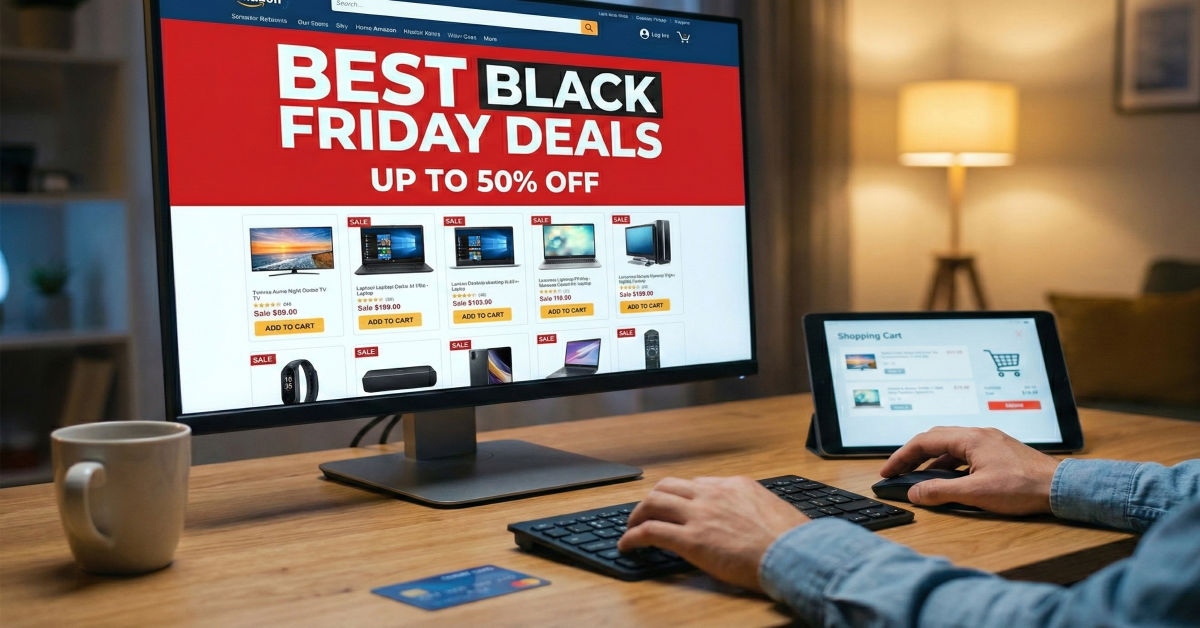Black Friday has grown from a single shopping day into a season-long retail phenomenon. By 2025, it has become a strategic opportunity for both consumers and retailers, with deals spanning electronics, home goods, fashion, and more. Today’s shoppers approach the event with more insight, aided by data analytics, AI-powered tools, and clearer understanding of value. Nearly half of consumers plan to use AI to help navigate deals, underscoring the importance of research and strategy before diving in.
This article explores the best Black Friday deals of 2025, offering insights into which categories deliver the deepest discounts, how shoppers are evolving, and where to find genuine bargains. By examining historical trends, expert perspectives and practical strategies, this guide helps shoppers make informed decisions without falling for hype, ensuring that purchases are both meaningful and cost-effective.
The Evolution of Black Friday
Early Discounts and Extended Sales
Black Friday is no longer confined to the Friday after Thanksgiving. Retailers like Amazon, Walmart, and Best Buy are launching early promotions, sometimes weeks ahead. Early deals often include up to 50% off major electronics, home appliances, and high-demand fashion items. By starting early, retailers capture consumer attention and spread out sales to manage inventory and shipping logistics.
Shoppers, in turn, are becoming more deliberate, planning purchases and tracking prices over time. This shift marks a move away from impulse buying toward informed, strategic shopping.
Strategic Consumer Behavior
Shoppers increasingly prioritize transparency and clear discounts. Offers like “X% off everything” resonate more than selective promotions or ambiguous markdowns. Generative AI is also shaping behavior: 48% of consumers plan to use AI tools to track deals, compare prices, and predict which items will offer the best value. This increased sophistication reflects the growing intelligence of modern consumers, who treat Black Friday as a calculated opportunity rather than a spontaneous event.
Deal Data Insights for 2025
| Metric | 2024 / 2025 Insights |
| US Online Sales | $10.8 billion on Black Friday 2024, a 10.2% YoY increase |
| Global Online Sales | $74.4 billion in a single day (Black Friday 2024), up ~5% YoY |
| Holiday Season Sales | Projected $305–310 billion in e-commerce holiday sales for 2025 |
| Consumer Behavior | 48% plan to use AI for deal-hunting |
These figures illustrate the scale and impact of Black Friday, highlighting why strategic planning is essential for both consumers and retailers.
Top Categories for Black Friday Deals
Electronics and Tech
Electronics continue to dominate the headline deals. TVs, laptops, headphones, and vacuums often see the deepest discounts. Historical trends show discounts for stick vacuums as high as 73% in past years. Given the durability and value retention of tech items, Black Friday offers one of the best opportunities to upgrade or replace electronics.
Home Goods and Appliances
Home goods and appliances also see significant markdowns. Retailers often use Black Friday to clear inventory, including air fryers, cookware, and small kitchen appliances. These items are especially attractive for gift-giving, making them popular with both bargain hunters and planners.
Fashion and Apparel
Clothing discounts are increasingly aggressive, with markdowns sometimes reaching 70% for winter coats, jeans, and seasonal essentials. Retailers use these discounts to manage inventory, making Black Friday an excellent time for both practical and luxury apparel purchases.
Expert Insights
Jessica Distler, Senior Partner at BCG:
“Consumers are rewriting the rules of year-end sales events—they want clarity, meaningful discounts, and they’re savvy about timing.”
Yasuyuki Kusuda, Omnichannel Retail Researcher:
“Retailers must harmonize online and in-store pricing strategies to remain competitive during peak shopping events.”
Anita N. Halamata, Consumer Behavior Researcher:
“The economic impact of Black Friday is overwhelmingly positive — 75% of respondents saw clear benefits for both consumers and retail jobs.”
These perspectives emphasize the importance of transparency, strategic pricing, and consumer awareness in navigating the modern Black Friday landscape.
Strategies for Maximizing Black Friday Deals
- Start Early, Stay Flexible – Early promotions are available, but prices may shift closer to Black Friday.
- Prioritize Meaningful Discounts – Focus on deals offering 30% or more to ensure real value.
- Use AI Wisely – AI can track deals and predict price drops but should be cross-checked with manual research.
- Understand Retailer Tactics – Big-box stores use Black Friday to liquidate overstock, while luxury retailers may provide selective markdowns.
- Focus on Category Trends – Electronics, home goods, and high-cost personal items offer significant opportunities.
Comparison Tables
Discount Evolution Over Five Years
| Product Category | 2020 Average Discount | 2024 Typical Discount |
| TVs & Large Electronics | 25‑35% | Up to 65% |
| Small Appliances | 30‑40% | 50‑60% |
| Vacuum Cleaners | ~40% | Up to 73% |
| Apparel | 40‑50% | Sometimes 70% |
Major Trends Influencing Black Friday 2025
| Trend | 2025 Insight |
| AI & Deal Hunting | 48% of shoppers plan to use AI |
| Early Promotions | Discounts begin well before Thanksgiving |
| Consumer Priorities | Clear “X% off” deals preferred |
| Spending Behavior | High-cost personal items increasingly purchased |
| Online vs In-Store | Omnichannel pricing alignment is essential |
Pitfalls to Avoid
- Impulse Buying – Many shoppers regret spontaneous purchases; make a plan and stick to it.
- Fake Hype Discounts – Verify historical prices to avoid misleading markdowns.
- Cybersecurity Risks – Holiday sales coincide with elevated cyberattack activity; use secure networks and trusted payment methods.
- Over-Reliance on AI – Pair AI recommendations with personal research to avoid biased decisions.
- Confusing Cross-Channel Pricing – Ensure consistency between online and in-store pricing.
Key Takeaways
- Black Friday 2025 spans multiple weeks with early deals and AI-powered shopping.
- Electronics, home appliances, and fashion remain prime categories for savings.
- AI is helpful but should complement manual deal verification.
- Prioritize deep discounts of 30% or more to ensure value.
- Awareness of marketing tactics and cybersecurity is essential.
Conclusion
Black Friday 2025 represents a sophisticated, strategic shopping opportunity. By combining historical pricing insights, AI tools, and careful planning, shoppers can secure significant savings while avoiding the pitfalls of hype-driven marketing. The event has evolved into a season-long period of opportunity where informed, deliberate purchases replace impulsive buying. By focusing on transparency, value, and planning, consumers can turn Black Friday into a meaningful and cost-effective experience.
FAQs
Q: When do the best deals appear?
A: Early deals often launch weeks before Black Friday, with main discounts peaking on the day itself.
Q: Is generative AI reliable for deal hunting?
A: AI can help track prices and forecast discounts, but manual verification remains essential.
Q: Which categories see the largest discounts?
A: Electronics, home appliances, and fashion usually have the deepest markdowns.
Q: How can I avoid regret from impulse purchases?
A: Plan purchases, set budgets, and revisit items before checkout.
Q: Are there security risks when shopping online?
A: Yes, including phishing and cyberattacks. Use secure networks, strong passwords, and trusted payment methods.











